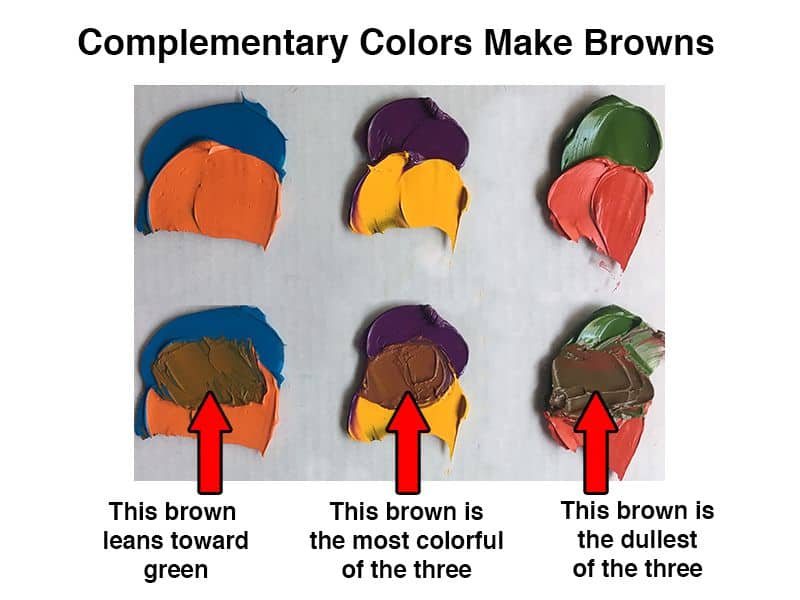Brown is a versatile and popular color that can be created by mixing other colors together. The best mix for brown depends on the specific shade of brown you want to achieve. By understanding color theory and how colors interact, you can find the ideal color combinations for rich browns in any hue.
The Basics of Mixing Brown
In its simplest form, brown is created by mixing complementary colors from opposite sides of the color wheel: yellow and purple. When complementary colors are combined, they mute each other resulting in a more neutral brown. However, basic brown can look dull. The key is balancing the ratios of each color.
More vibrant browns are achieved by adding other colors into the mix. Warm yellow-browns are accentuated with orange and red. Cooler taupe browns are created by adding blue and green. Black and white will also deepen and lighten the shade respectively.
The following colors combine well to make versatile browns:
| Yellow | Orange | Red |
| Purple | Magenta | Blue |
| Green | Black | White |
Understanding these color combinations is key to mixing the perfect brown for your needs.
Warm Brown Shades
Warm browns feature golden or reddish undertones. They are often paired with metals like gold and copper. Warm shades remind us of fall leaves, hot chocolate, and cinnamon. Here are some popular warm browns and how to mix them:
Golden Brown
This vibrant brown evokes sunshine and earth. Mix a golden yellow like cadmium yellow with a touch of orange and red. Brown with more orange will have a clay look. Adding more red results in a burnt umber. For a soft golden glow, use raw sienna or raw umber.
Coffee Brown
A rich shade reminiscent of a steaming cup of coffee. Mix in creamy tans and yellow ochre to deepen the color. Adding a touch of red-violet will enhance the dark coffee hue. Use burnt umber with black to go even darker.
Cinnamon Brown
This vibrant reddish brown resembles a cinnamon stick. Mix orange-yellow with red and a touch of purple to mute it. Burnt sienna adds pleasant warmth. For a softer look, add beige, cream, or white.
These warm brown combinations use yellows, oranges, reds, and dashes of purple to create inviting, cozy shades.
Cool Brown Shades
Cool browns have bluer or greener undertones. They are associated with stone, leather, and wood. Cool shades pair well with silver metals. Here are some popular cool browns:
Taupe
This complex neutral mixes gray, purple, green, and black. Start with a gray base, then add subtle violet and olive tones. Play with different ratios to achieve light, medium, or dark taupe. Add white for a greige effect.
Chestnut Brown
Chestnut has red-violet notes for richness. Mix burnt umber with a touch of blue and green to cool it down. Raw umber and an earthy green like terre verte also creates pleasing chestnut tones.
Espresso Brown
This very dark brown resembles an espresso shot. Start with dark browns like burnt umber or mars black. Add just a touch of blue to intensify the almost-black shade. Going too blue will result in a steel gray.
These cool brown combinations use greens, blues, purples, and black for polished, elegant shades.
Neutral and Beige Browns
Some of the most versatile browns sit between warm and cool. These neutral, beige-like browns pair well with most colors. They create timeless, natural looks. Here are some neutral shades:
Mocha
For this soft brown, mix in cream, beige, or light yellow. Adding white to deeper browns like burnt sienna or raw umber also produces pleasing mocha colors. Use touches of peach or orange to warm it up.
Tan
Mix yellow, orange, red, white, and beige to get a light brown tan. Add brown tones like burnt sienna to deepen and enrich it. Stay away from black, which will make the color look dirty and muted.
Mink
This rich neutral resembles mink fur. Mix burnt umber with gray and black. Add white and beige to lighten. A touch of blue-violet keeps it right between warm and cool tones.
These neutral browns are easy to pair with other colors. They create natural, subtle backgrounds in any design or palette.
Tips for Mixing Brown
Follow these tips when mixing paints, dyes, or other media to create the perfect brown:
- Start with a yellow-orange base for warm brown. Use blue-green for cool brown.
- Add the complemenatry color (purple for warm, reddish-orange for cool) to gray and mute.
- Deepen with black, white, or brown pigments like raw or burnt umber.
- Adding opposite shades creates dimension: blue to warm, orange to cool.
- Adjust ratios to find the right hue. More yellow for golden, more red for reddish-brown, etc.
- Test colors on a palette first to perfect the mix before applying.
With an understanding of color theory, you can mix infinite shades of rich, complex brown. Keep these combinations in mind and experiment with different ratios.
Conclusion
Brown may seem simple, but it can have many colorful undertones and shades. The key to mixing the best brown is understanding color relationships. Warm browns use yellows, oranges and reds. Cool browns mix in blues, greens, and purples. Neutral beige browns sit in the middle for versatility.
The ideal brown mix depends on your specific needs. Golden browns evoke fall warmth. Coffee colors are perfect for an elegant dining room. Earthy chestnut complements pottery and ceramics. And neutral shades provide a timeless, natural background. With a few primary colors and smart combinations, you can mix beautiful, nuanced browns to enhance any space or palette.


